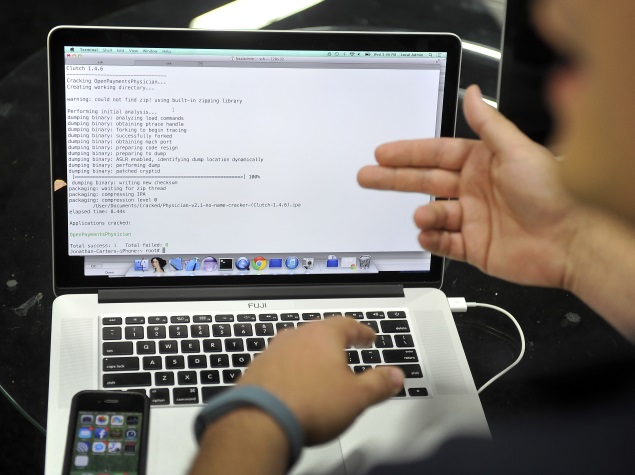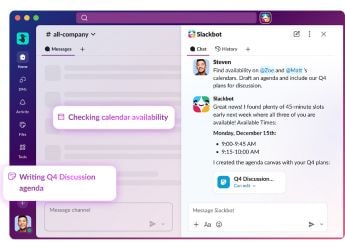- Home
- Internet
- Internet News
- US Government Struggling Against Cyber Attacks
US Government Struggling Against Cyber-Attacks

Workers scattered across more than a dozen agencies, from the Defense and Education departments to the National Weather Service, are responsible for at least half of the federal cyber-incidents reported each year since 2010, according to an Associated Press analysis of records.
They have clicked links in bogus phishing emails, opened malware-laden websites and been tricked by scammers into sharing information.
One was redirected to a hostile site after connecting to a video of tennis star Serena Williams. A few act intentionally, most famously former National Security Agency contractor Edward Snowden, who downloaded and leaked documents revealing the government's collection of phone and email records.
Then there was the contract worker who lost equipment containing the confidential information of millions of Americans, including Robert Curtis of Colorado.
"I was angry, because we as citizens trust the government to act on our behalf," he said. Curtis, according to court records, was besieged by identity thieves after someone stole data tapes that the contractor left in a car, exposing the health records of about 5 million current and former Pentagon employees and their families.
At a time when intelligence officials say cyber-security trumps terrorism as the No. 1 threat to the U.S., the federal government isn't required to publicize its own data losses.
Last month, a breach of unclassified White House computers by hackers thought to be working for Russia was reported not by officials but The Washington Post. Congressional Republicans complained even they weren't alerted to the hack.
To determine the extent of federal cyber-incidents, the AP filed dozens of Freedom of Information Act requests, interviewed hackers, cyber-security experts and government officials, and obtained documents describing digital cracks in the system.
That review shows that 40 years and more than $100 billion (roughly Rs. 6,14,700 crores) after the first federal data protection law was enacted, the government is struggling to close holes without the knowledge, staff or systems to outwit an ever-evolving foe.
Fears about breaches have been around since the late 1960s, when the federal government began shifting its operations onto computers. Officials responded with software designed to sniff out malicious programs and raise alarms about intruders. And yet, attackers have always found a way in, exposing tens of millions of sensitive and private records that include employee usernames and passwords and veterans' medical files.
From 2009 to 2013, the number of reported breaches just on federal computer networks - the .gov and .mils - rose from 26,942 to 46,605, according to the U.S. Computer Emergency Readiness Team. Last year, US-CERT responded to a total of 228,700 cyber-incidents involving federal agencies, companies that run critical infrastructure and contract partners. That's more than double the incidents in 2009.
And employees are to blame for at least half of the problems.
Last year, for example, about 21 percent of all federal breaches were traced to government workers who violated policies; 16 percent who lost devices or had them stolen; 12 percent who improperly handled sensitive information printed from computers; at least 8 percent who ran or installed malicious software; and 6 percent who were enticed to share private information, according to an annual White House review.
Reports from the Defense Department's Defense Security Service, tasked with protecting classified information and technologies in the hands of federal contractors, show how easy it is for hackers to get into DOD networks. One military user received messages that his computer was infected when he visited a website about schools. Officials tracked the attacker to what appeared to be a Germany-based server.
"We'll always be vulnerable to ... human-factor attacks unless we educate the overall workforce," said Assistant Secretary of Defense and cyber-security adviser Eric Rosenbach.
Although the government is projected to spend $65 billion (roughly Rs. 3,99,500 crores) on cyber-security contracts between 2015 and 2020, many experts believe the effort is not enough to counter a growing pool of hackers whose motives vary. Russia, Iran and China have been named as suspects in some attacks, while thieves seek out other valuable data. Only a small fraction of attackers are caught.
For every thief or hostile state, there are tens of thousands of victims like Curtis.
"It is very ironic," said Curtis, himself a cyber-security expert who worked to provide secure networks at the Pentagon. "I was the person who had paper shredders in my house. I was a consummate data protection guy."
Catch the latest from the Consumer Electronics Show on Gadgets 360, at our CES 2026 hub.
Related Stories
- Samsung Galaxy Unpacked 2025
- ChatGPT
- Redmi Note 14 Pro+
- iPhone 16
- Apple Vision Pro
- Oneplus 12
- OnePlus Nord CE 3 Lite 5G
- iPhone 13
- Xiaomi 14 Pro
- Oppo Find N3
- Tecno Spark Go (2023)
- Realme V30
- Best Phones Under 25000
- Samsung Galaxy S24 Series
- Cryptocurrency
- iQoo 12
- Samsung Galaxy S24 Ultra
- Giottus
- Samsung Galaxy Z Flip 5
- Apple 'Scary Fast'
- Housefull 5
- GoPro Hero 12 Black Review
- Invincible Season 2
- JioGlass
- HD Ready TV
- Laptop Under 50000
- Smartwatch Under 10000
- Latest Mobile Phones
- Compare Phones
- Samsung Galaxy A07 5G
- Vivo Y500i
- OnePlus Turbo 6V
- OnePlus Turbo 6
- Itel Zeno 20 Max
- OPPO Reno 15 Pro Mini 5G
- Poco M8 Pro 5G
- Motorola Signature
- Lenovo Yoga Slim 7x (2025)
- Lenovo Yoga Slim 7a
- Realme Pad 3
- OPPO Pad Air 5
- NoiseFit Pro 6R
- Xiaomi Watch 5
- Acerpure Nitro Z Series 100-inch QLED TV
- Samsung 43 Inch LED Ultra HD (4K) Smart TV (UA43UE81AFULXL)
- Asus ROG Ally
- Nintendo Switch Lite
- Haier 1.6 Ton 5 Star Inverter Split AC (HSU19G-MZAID5BN-INV)
- Haier 1.6 Ton 5 Star Inverter Split AC (HSU19G-MZAIM5BN-INV)
















